MARIANI’S
August
16, 2009
NEWSLETTER

"Caper berries from Pantelleria," Sicily 2009 by Galina Stepanoff-Dargery
QUESTIONS? TO REACH JOHN MARIANI WRITE
TO: newsletter@johnmariani.com.
ARCHIVE: Readers may now access
an
Archive of all past newsletters--each annotated--dating back to July,
2003, by simply clicking on www.johnmariani.com/archive
SUBSCRIBE AND
UN-SUBSCRIBE: You may subscribe anyone you wish
to this newsletter--free of charge--by
clicking here.
In
This Issue
CRUISE PICARESQUE by John Mariani
NEW YORK CORNER: momofuku noodle bar by John Mariani
NOTES
FROM THE SPIRITS LOCKER:
BIGGER
BETTER RUMS CHALLENGE SCOTCH
AND BOURBON FOR SPOTLIGHT by
John Mariani
~~~~~~~~~~~~~
CRUISE PICARESQUE
by John Mariani

Last fall my wife and
I had the
opportunity to sail the Mediterranean on one of the Yachts of
Seabourn, a luxury cruise line headquartered in Miami, whose ships
are
considerably smaller than so many of the grotesque leviathans that ply
the world's
waters these days, with thousands of passengers gorging each day
and night on sub-standard food and mediocre wines. Seabourn was easily
the best of the cruise ships I've ever traveled on--impeccable service,
first-rate cuisine, very well-chosen wines, and passengers that
reminded me of what it must have once been like to hobnob with those
who sailed on "A" deck back in the 1950s.
Seabourn's ships are much smaller, more
intimate, with current fleets carrying only 208 passengers per ship,
which include the Pride, Spirit, and Legend, with three more ships
on the way over the next two years. While the prices are higher than,
say, traveling on Carnival (which owns Seabourn), the amenities are
exceptional and the food and wine the best in the industry--and the
price is all-inclusive, for rooms, all meals, beverages, wines, and
service, with no tipping at journey's end.
Because of the
ships' size, Seabourn can dock in smaller ports and
right at the dock in big ports, which means you simply alight onto
terra firma without need for a ferry.
Also, all the food is
prepared onboard à la minute,
not in huge quantities made in
advance, and as much as possible the food is purchased at local ports
rather than stored for weeks. In some ports the ships offer "Shopping
with the Chef" programs for which no more than eight guests tour the
local markets with the chef and help choose what they'll enjoy for
dinner that evening.
The winelist, and service, are
excellent, and all wines and spirits placed in your room (replenished
daily) according to your choice are part of the sail price, and
that also includes wine at meals and Champagne and cocktails all day.
There is also a  Vintage
Seabourn premium wine package at $400 that
allows access to the finest wines in the cellar, and they are
amazingly well priced--below what you'll find in most restaurants.
Vintage
Seabourn premium wine package at $400 that
allows access to the finest wines in the cellar, and they are
amazingly well priced--below what you'll find in most restaurants.
Our cruise, on the Legend, was around Italy,
with
the
ports of Sorrento, Taormina, Malta, and Trapani en route. (We hopped
ship at Trapani and stayed for a week in Sicily, about which I will be
writing in the weeks to come.) We began in Rome, and the transfer from
land to ship was handled with far better efficiency than most lines I
have sailed on. Our suite was spacious, with a wonderful veranda over
the sea, queen-size bed, walk-in closet, interactive flat-screen
television (that actually worked!), with music and movies, fully
stocked bar and refrigerator,
writing desk with personalized stationary, makeup vanity, granite
bathroom with separate tub and shower, and electricity available at
both 110 and 220 volts; there was a direct-dial
telephone.
The young crew is very international,
impressively fluent in English, and well conversant about the food and
wines served throughout. We always left the ship at every port, so our
dining was largely in the evening at the open dining room (above), where the
menus change nightly and offer a far wider range than is usual on
cruise lines. Many dishes I would rank with fine dining in Europe
generally, and among cruise ships, I'd say it was overall by far the
best I've had. So many ships' menus are still in the dated continental
mode, while on Seabourn, they were featuring dishes like chilled corn
and lemongrass soup with spicy lobster salad and shrimp,
pan-roasted Cornish game hen with porcini
risotto and a coulis of
arugula and glazed cherry tomatoes; the succulent double lamb chops
could not
have been more generously cut or better cooked than those we enjoyed on
our first night.
On other nights we particularly enjoyed
malossol caviar
and smoked salmon atop crunchy potato latkes; a whole broiled lobster
with steamed potatoes, asparagus, and chive butter; and roast prime rib
of beef with onion rings. Carved veal tenderloin with creamy parmesan
polenta was cooked to perfect pink as requested, and at the other
upscale restaurant, Tastings @ 2,
we enjoyed dishes like crisp sea bass
with a citrus fondue, barbecued shortrib and seared foie gras, and
orange potato soubise.
This is fancy cooking, and the kitchen,
working with first-rate ingredients, does extremely well with them.
Desserts were just as imaginative, like a sweet coffee sandwich with
salted caramel, ice cream, and white chocolate foam.  Overall,
the
wines
chosen for each meal were more than commendable. And, yes, the featured
wines each evening were in fact cheaper than I might have found them at
onshore restaurants e.g.,
Château Haut-Brion 1996 for $370, which sells for $775 at The
French Laundry in Napa Valley.
Overall,
the
wines
chosen for each meal were more than commendable. And, yes, the featured
wines each evening were in fact cheaper than I might have found them at
onshore restaurants e.g.,
Château Haut-Brion 1996 for $370, which sells for $775 at The
French Laundry in Napa Valley.
Our first stop
was Sorrento,
with the option of visiting Pompeii with an ebullient guide who,
even if he did make up stories about the volcano-razed ruins, was
amusing enough for us not to care too much. The quiet of Pompeii (left),
which was destroyed 79 AD and not excavated until 1748 (which still
goes on), is not an eeerie quiet but a peaceful one, as if the city is
suspended between the dust and ashes and the new greenery that
resolutely re-emerged over centuries. Twenty-three feet of
volcanic cinders covered parts of the city, fantastically described in
Buler-Lytton's 1834 novel, The Last
Days of Pompeii. There are some amazingly beautiful murals that
have been brought to life again, and guides always point out the houses
of ill repute that dot the landscape here. Casts of bodies buried
within seconds of the disaster's occurrence give a very human form to
the horrors of the moment, as if it had happened only fifty years ago
rather than 22 centuries in the past.
Sorrento itself is a
medium-size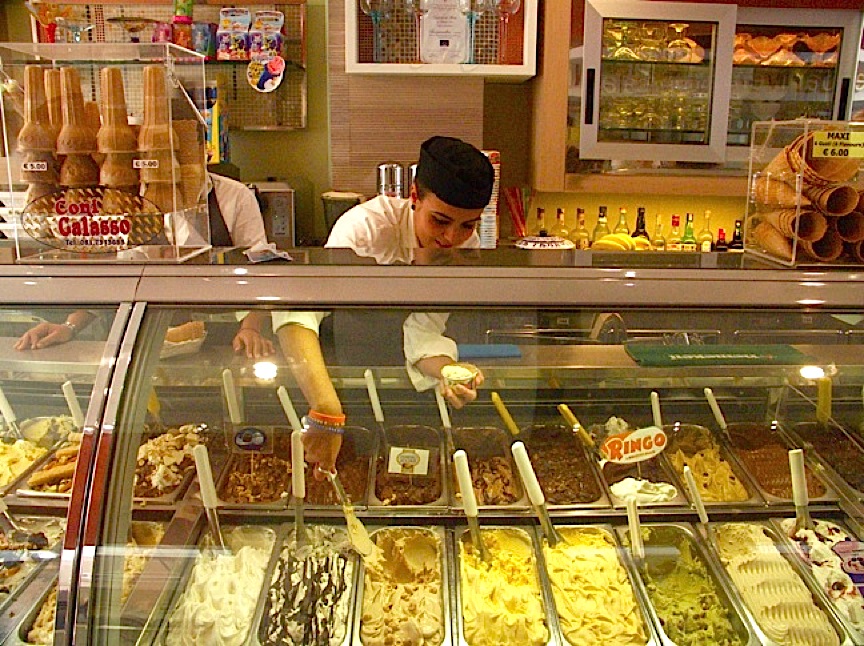 city of quaint Campanian charm, centered by the Piazza
Tasso, and
on the way to Amalfi, which was another tour option that day. We
strolled the streets of Sorrento down by the water and wound our way up
to the main
street, Corso Italia, lined with boutiques, and gelaterias--the
grandest is Bouganvillea (right) whose owners Nino and
Gianluca Cioffi handmake the ice cream----and to one of my favorite
restaurants in Italy--Caruso (below), whose warren of antique
rooms beset with artwork and photos of Naples, Sorrento, and the Amalfi
coast are as hospitable as at any trattoria. But owner Carlo
Esposito's principal focus here is on the great Enrico Caruso
himself, whose photos,
city of quaint Campanian charm, centered by the Piazza
Tasso, and
on the way to Amalfi, which was another tour option that day. We
strolled the streets of Sorrento down by the water and wound our way up
to the main
street, Corso Italia, lined with boutiques, and gelaterias--the
grandest is Bouganvillea (right) whose owners Nino and
Gianluca Cioffi handmake the ice cream----and to one of my favorite
restaurants in Italy--Caruso (below), whose warren of antique
rooms beset with artwork and photos of Naples, Sorrento, and the Amalfi
coast are as hospitable as at any trattoria. But owner Carlo
Esposito's principal focus here is on the great Enrico Caruso
himself, whose photos, 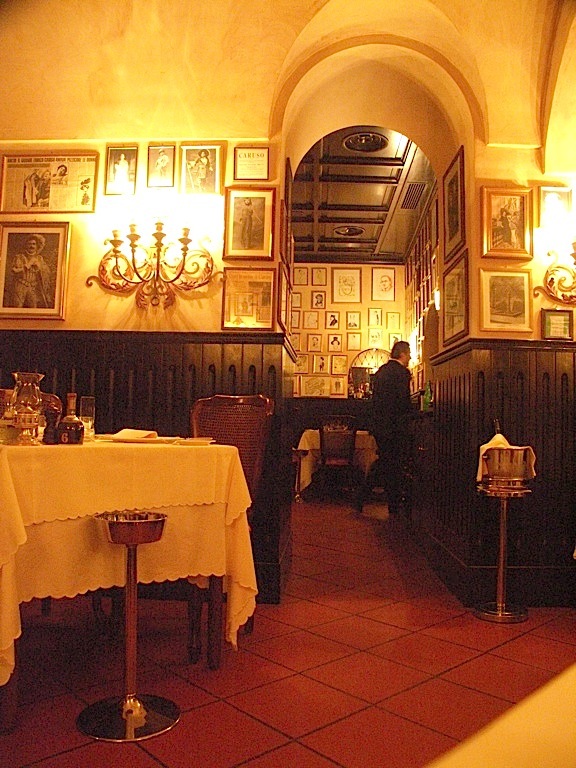 caricatures,
and playbills line whole walls here; thus, Ristorante Caruso's
appellation
"Museo." Our first bite of tricolor lasagnetta with vegetables of the
region reminded me how fine a restaurant this is, and the risotto mantecato with squash blossoms
cooked in Taurasi wine reminded us we were in Campania, where that
lovely red wine comes from.
caricatures,
and playbills line whole walls here; thus, Ristorante Caruso's
appellation
"Museo." Our first bite of tricolor lasagnetta with vegetables of the
region reminded me how fine a restaurant this is, and the risotto mantecato with squash blossoms
cooked in Taurasi wine reminded us we were in Campania, where that
lovely red wine comes from.
The menu has modernism too, in dishes like a tartare
of scampi with marinated
fennel and crème fraîche with herbs, and a pasta of paccheri with Mediterranean
lobster and eggplant. The wine cave is astoundingly stocked with
the finest wines of Italy. Our extensive three-course lunch with wine,
including service, cost 144 euros.
We
sailed on to Malta, which I had not visited
in 30 years. I found it remarkably changed for the better, its
old buildings, heavily damaged in World War II, scrubbed clean to a
creamy-colored white, with buffed
walkways, beautiful churches, including St. John's Cathedral, a Museum
of Fine Arts, another of Archeology, and the Old City of Mdina, Malta's
first capital, which shows clearly the influence of hundreds of years
of Islamic control. 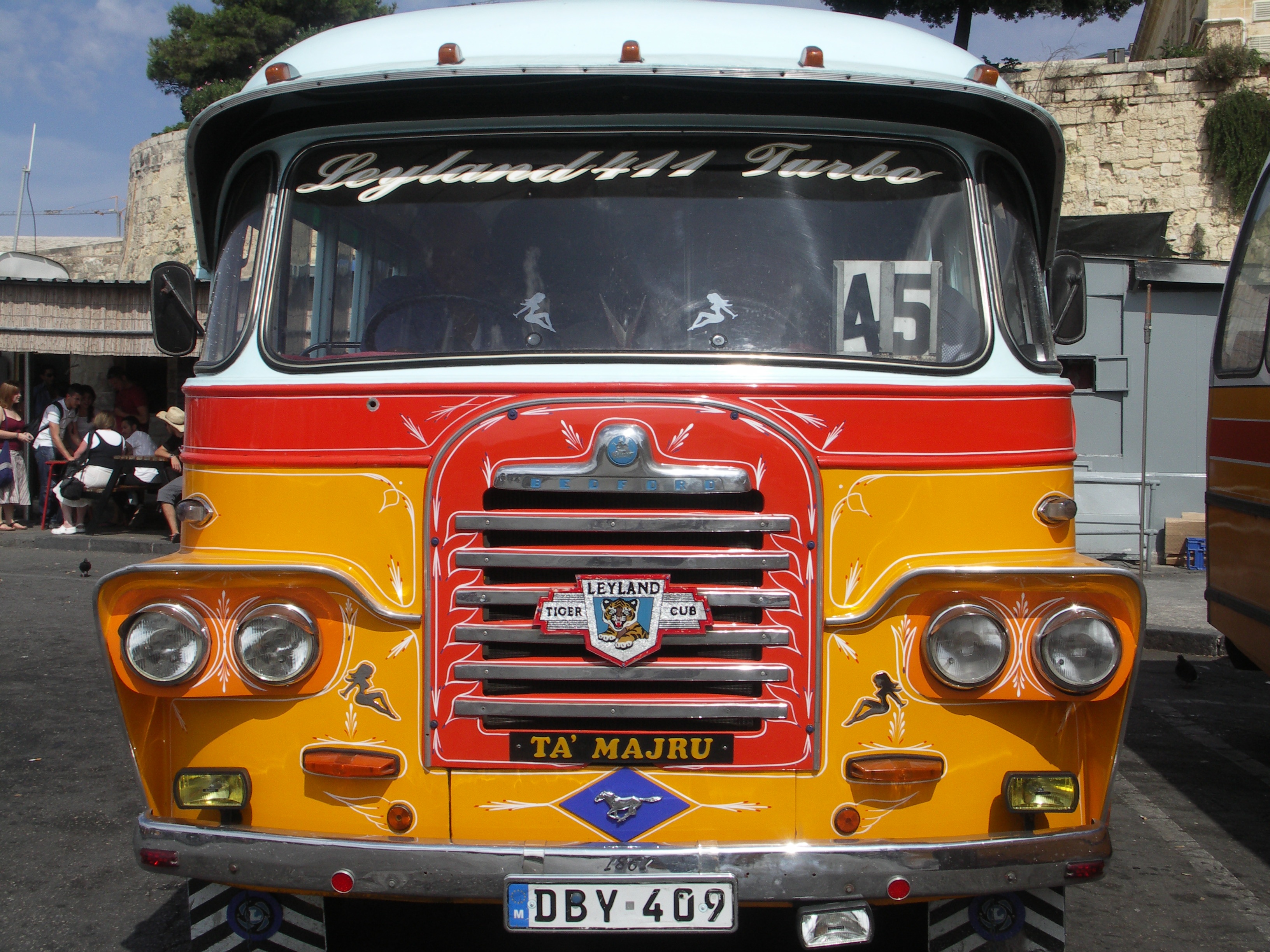 The
Fort
of St. Elmo, itself now restored, has been
the site of several movie sets, including "Gladiator," when it doubled
as Rome, and "Midnight Express," when it doubled for an Turkish prison.
The
Fort
of St. Elmo, itself now restored, has been
the site of several movie sets, including "Gladiator," when it doubled
as Rome, and "Midnight Express," when it doubled for an Turkish prison.
In the port city of Valletta, in the
main plaza the street teems with the most beautiful old buses of
considerable vintage. Mostly yellow, with all sorts of chrome additions
and streamlining, they rumble and rattle up and down town but they are
unforgettable,
eminently photographable, and would make a good small book.
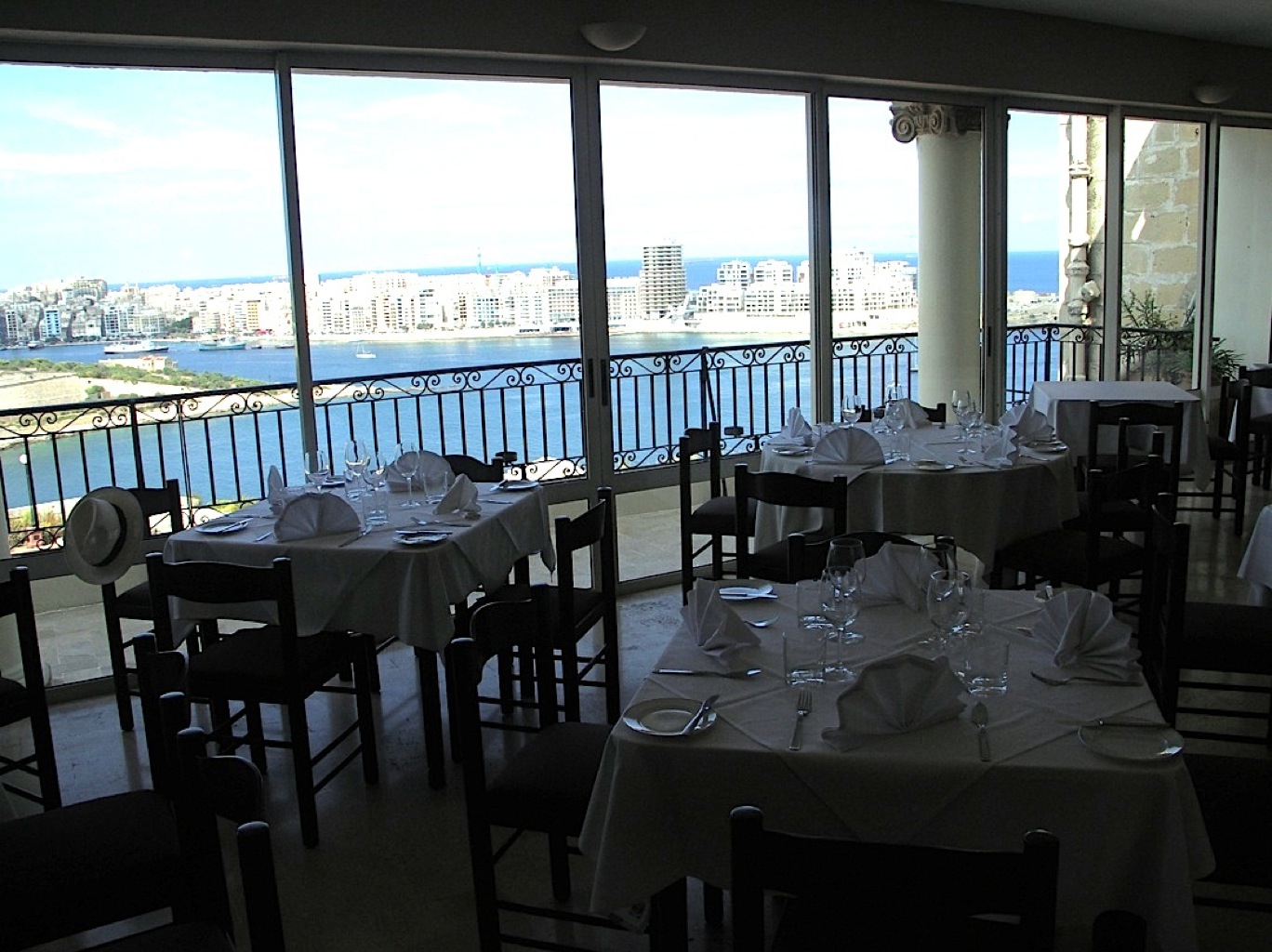 On the
heights
called St. Michael's Bastions, we ate lunch at a lovely, bright, airy
third-floor restaurant named Giannini (left) which has several Maltese
wines well worth sampling; the grapes are locally grown, then sent to
Italy to be made into wine. We began with a carpaccio of swordfish, as
fresh as any I've ever had around the Mediterranean, and ravioli with
rabbit that had been cooked in tarragon butter. Our main courses were
fried rabbit--a local specialty, obviously--cooked with garlic in white
wine, and impeccably grilled amberjack, which in these waters is called
ricciola. Oddly
enough--and not particularly good for the appetite--Kenny G
music was being piped in.
On the
heights
called St. Michael's Bastions, we ate lunch at a lovely, bright, airy
third-floor restaurant named Giannini (left) which has several Maltese
wines well worth sampling; the grapes are locally grown, then sent to
Italy to be made into wine. We began with a carpaccio of swordfish, as
fresh as any I've ever had around the Mediterranean, and ravioli with
rabbit that had been cooked in tarragon butter. Our main courses were
fried rabbit--a local specialty, obviously--cooked with garlic in white
wine, and impeccably grilled amberjack, which in these waters is called
ricciola. Oddly
enough--and not particularly good for the appetite--Kenny G
music was being piped in.
Our return to the ship meant a day at
sea before getting to Taormina, which will be part of my upcoming
report on Sicily. But we could have happily stayed onboard and
gone on to the other ports of call.
Seabourn costs more
than many other lines but it also delivers a great deal more in quiet,
tasteful
pleasure far from the madding crowds that so often make other ships'
travels something of a travail.
~~~~~~~~~~~~~~~~~~~~~~~~~~~~~~~~~~~
NEW
YORK CORNER
by John Mariani
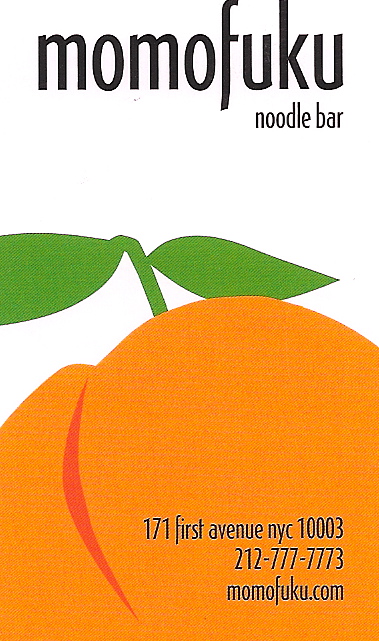
I have not yet been able to
eat at David Chang's Momofuku Ko, but
not for lack of trying. The byzantine on-line reservation system is so
overloaded with people trying desperately to get one of the fourteen
seats at the place--“No phone. No favorites. No exceptions”--that not
even a very determined Esquire intern, who
tried for six weeks last summer to get a table, could get through. I
can wait.
Chang, of course, is the wunderkind of New York
foodie-ism, having won two James Beard Foundation awards so
far; GQ Magazine called him
“Chef of the Year 2007,” New York
Magazine follows his every move like paparazzi, The New Yorker profiled him, Bon Appetit this month devoted a
Japanese comic strip to him, Gourmet
called him the most important chef of the last 50 years, and
Anthony Bourdain has called him a “demi-god.” He's already got an
entry in Wikipedia.
Yet Chang's background is a modest one, for
while he'd cooked in NYC restaurants like Café Boulud and
Mercer Kitchen, his Momofuku Noodle Bar and the Korean-style Momofuku
Ssäm Bar in the East Village were never intended to serve haute
cuisine. The latter got two stars from the NY Times, then three for Ko.
Ironically, Chang achieved all this despite foul-mouthing everything
the fawning foodie media hold dear, telling them, “I don’t believe in
that whole superstar celebrity chef thing. I’ve worked in too many
kitchens where the egos got in the way of the food. I appreciate the
honor; it’s amazing, but it’s also surreal and absurd. Sometimes I feel
like I’m on ‘The Truman Show.’ I always considered myself one of the
worst cooks in any kitchen I ever worked at."
Nevertheless, evidence from his upcoming
cookbook shows off Chang, and his staff, to which he gives full credit
as partners in his creativity, has some terrific ideas, born out of
mere wonder if this or that might work, if a dish may be fiddled with
and improved, without any of the show-off mechanics of molecular
cuisine. So, until I do get to Momofuku Ko, I shall withhold judgment
on
Chang's demi-god status.
Much easier to get into is his two-year
old Momofuku Noodle Bar, which is no less casual than Ko but has a
homier, what's-to-eat? menu, which does in fact have a noodle dish or
two. And it's not going to cost you much, once you get in. The people
up front are very cordial, walk-ins get seated pretty quickly--this
kind of food does not encourage lingering--and the tables are barebones
wood, like the walls. One big caveat here: The noise level is literally
excruciating!
Conversation is almost impossible, and my ears were
ringing upon exiting into the relative quiet of taxis,
sanitation trucks, police cars, and ambulances
rushing through the East
Village.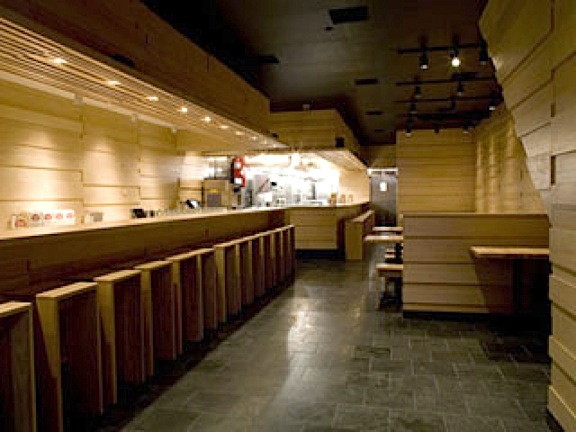
"MNB" is definitely a no-frills place, by
design--backless stools are not real comfy--and the menu is printed
daily, with a 4-course dinner at $30, à la carte
items $9-$16, some sake selections and wines by the 4-ounce pour and
300
ml., and most bottles under $50, then six beers and some sodas and
waters.
The famous steamed buns
with chicken, shiitake, and pork are, in a word, yummy, though I
wouldn't go into ecstasy over them. Indeed, my response to most of what
I ate was that this was delicious storefront style fare with flair and
at very fair prices. Nothing bowled me over. Very good was the
roasted pork belly with garlic confit and pickled ramps, and the
pan-fried skate with asparagus, kimchi,
and lemon got a little lost in
the condiments. Smoked chicken wings with pickled chili, garlic, and
scallions would not rank among the best I've had, and the beet salad
with yogurt, ham, and black pepper honey seemed more an afterthought
than thought through.
Then there are the noodles that give the
place its name, and they are pretty good--not extravagantly better than
the best in Chinatown but ramen
with pork belly, pork shoulder, and a
poached egg had heft and flavor; chilled spicy noodles with Sichuan
spiced sausage, spinach, and cashews was a nice toss, and the ginger
scallions with beet greens, cucumber, and menma (a traditional Japanese
condiment of thinly sliced bamboo to give ramen texture) was a nice
change of pace.
I'm not convinced of the wisdom of making
Stout soft-serve ice cream, but it's worth a sampling.
In no way do I mean to damn with faint praise
the food at MNB, for I don't think Chang had any intention of blowing
the culinary roof off NYC with this amiable place; that, he is
said to
be doing at Ko. I'm still waiting to click in for a rez there. Watch
this space.
Momofuku is open daily for
lunch and dinner.
~~~~~~~~~~~~~~~~~~
BIGGER
BETTER RUMS CHALLENGE SCOTCH AND BOURBON FOR SPOTLIGHT
by John Mariani
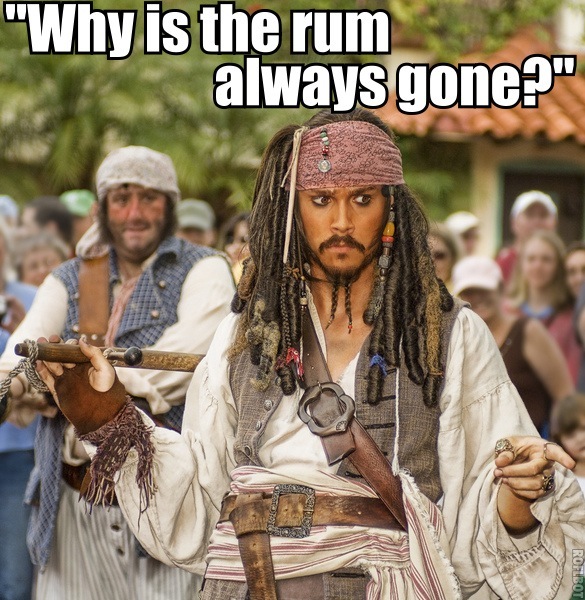 Even though
rum, with an 11.5 percent share of the U.S. brown liquor market,
outsells brandies (6.6), Scotch (7.7), and American whiskies (9.0),
those other spirits have garnered far more prestige by promoting their
high-priced single barrel, reserve, even vintage bottlings as “sipping”
spirits. Rum, though, has always been more of a versatile liquor for
making cocktails from like the daiquiri, piña colada, mai tai,
and good
old rum-and-Coke.
Even though
rum, with an 11.5 percent share of the U.S. brown liquor market,
outsells brandies (6.6), Scotch (7.7), and American whiskies (9.0),
those other spirits have garnered far more prestige by promoting their
high-priced single barrel, reserve, even vintage bottlings as “sipping”
spirits. Rum, though, has always been more of a versatile liquor for
making cocktails from like the daiquiri, piña colada, mai tai,
and good
old rum-and-Coke.
Now, however, rum makers are beginning to
promote their own historic product as a drink to be savored entirely on
its own, in a snifter or cut with a dash of water.
Made by distilling fermented sugar cane,
usually at 80 proof, rum has been made throughout the Caribbean since
Columbus brought the cane to the West Indies. By 1775 Americans were
drinking four gallons of rum per person, and on British ships it was
the base of the daily grog ration.
According to Adams Liquor Handbook,
Americans now consume 134 million 9-liter cases of rum per year,
overwhelmingly white or silver rum mixed into cocktails. Though
many islands make rum in the Caribbean, Bacardi, based in Puerto Rico,
sells a whopping 43.1 percent of all rums in the U.S., 38.4 percent of
that their own brands.
Some well-established rums, like Gosling’s Black Seal Dark Rum,
have always been sold on the basis of
their intense, caramel-like, woody flavor and color, even though
Gosling’s is just 80 proof. And there are cult favorites like Havana
Club, whose principal appeal is that you can’t buy it in the
U.S.
because it is considered Cuban contraband. (Bacardi, however, has
rights to make Havana Club in Puerto Rico, supposedly with the original
recipe.)
I purchased an array of these premium, aged rums and
tasted them neat, then cut with a dash of filtered water. I was
amazed at the distinctions among bottlings from different islands,
though that has more to do with the distilleries than with the soil the
sugar cane grows in. Here are my favorites.
Ron Zacapa
Centenario Solera Grand Reserve
($39-$45)—A Guatamalan rum blended from stocks six to 23 years old,
distilled from the “virgin press” of the sugar cane. It has a huge
bouquet, and if you like natural sweetness in your liquor, this has
plenty of caramel flavor and underneath that tasty tobacco notes.
A very lush rum nicely mellowed with water.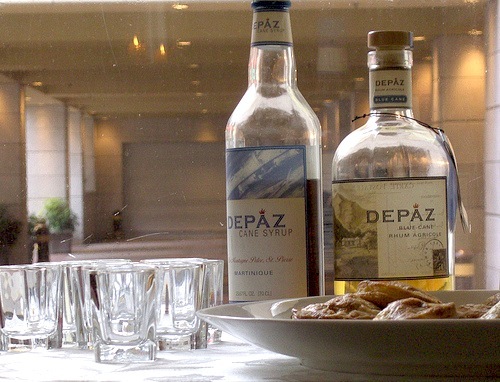
Flor
de Cana Grand
Réserve ($22)—A tropical, Nicaraguan beauty, pale
gold, with a mild piney aroma and some fruit flavors that make it
better served neat, although it would make a fine addition to a
daiquiri—but not a piña colada.
Depáz Blue Cane Rhum
Agricole
($50)—This Martinique
rum is worth every penny, a fabulous example of complexity, balanced
sweetness and dryness, and as sophisticated as cognac with some of the
dash of Armagnac.
Gosling’s Gold
Bermuda Rum ($21)—Far lighter than
Black Seal Dark, this is a delightfully spicy—though not artificially
“spiced”—rum with light caramel. Very good cut with water or on the
rocks as an aperitif.
Bacardi 151
($24)—The label reads “WARNING:
FLAMMABLE,” and that’s a good description of what happens if you slug
back this 151 proof Puerto Rican rum too fast. 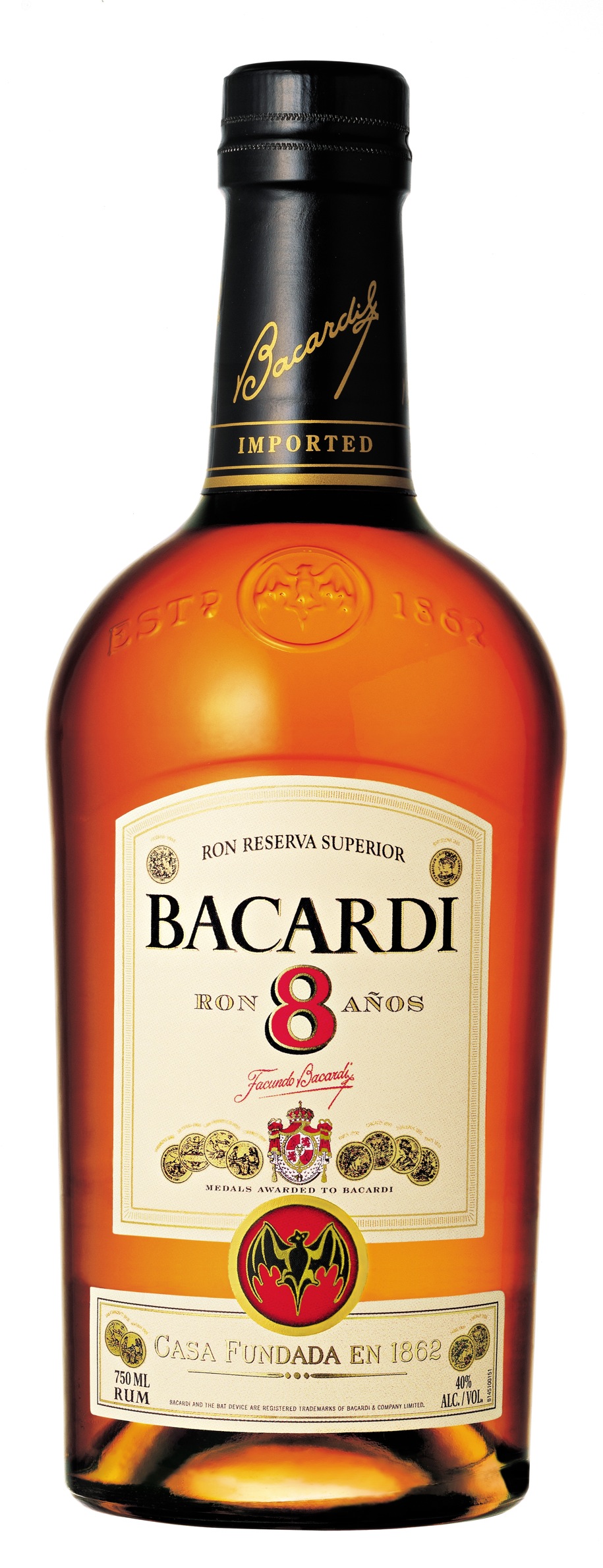 It packs a
wallop, and its aroma bounds out of the glass. You may want to smoke a
cigar with this just to counteract its massive flavor. Bacardi 8 Year
Old ($24) is also a beauty, full of lingering spicy notes and
an
elegant finish.
It packs a
wallop, and its aroma bounds out of the glass. You may want to smoke a
cigar with this just to counteract its massive flavor. Bacardi 8 Year
Old ($24) is also a beauty, full of lingering spicy notes and
an
elegant finish.
Appleton
Estate is the oldest sugar factory and distillery in Jamaica,
begun in 1749, and today their rums are created by Joy Spence, the only
woman Master Blender in the industry. Appleton's Reserve ($23-$27) made
from 20 different rums, has a double punch--it begins quite dry in the
mouth, then flowers with spice and sweetness on the palate, making for
a highyl satisfying sipping rum but also one to have with a splash of
water or club soda, and, as has been suggested, a slice of fresh
orange. The estate's Extra
12-Year-Old ($49), which refers to the youngest rum in the
blend being 12 years old (Appleton ages up to 21 years), is 43 percent
alcohol and thus has a true bite to it, mellowed by a molasses-rich
creaminess in the finish.
Brugal,
founded in 1888, sounds like a latecomer to the rum business, but its Ron Extra Viejo Gran Reserva Familiar ($24-28), made in the
Dominican Republic, comes in what looks like a club soda bottle,
so it's not going for the crowd impressed by elegant bottles. Instead
its big, bold flavor is a combination of many layers of vanilla,
cinnamon, and caramel, in a word, marvelously mellow, at 40 percent
alochol, but one of the most sophisticated rums I've tried.
Clément
“rhums,”
made in Martinique, have
always touted their French connection, so that Rhum Vieux ($40), made
from white rums, takes the old cognac insignia of “VSOP” (Very Superior
Old Pale), and its Très Vieux
($150), at 88 proof, is called “X.O.”
(Extra Old). The former is an perfect expression of the power of
rum without going over 80 proof: exploding on the palate, with a
dry-sweet balance that reminds me of the finest Irish whiskies.
The Très Vieux, which comes in a gorgeous tear-drop shaped
bottle that
makes it a perfect gift, was the most complex rum of those I tasted,
with an enchanting sea salty component, a pleasant bite, and a long
finish. You could cut this with water, but this is definitely arum for
sitting around in a white linen suit and straw hat watching the green
flash of the sun setting in the tropic sea.
John Mariani's wine & spirits column appears in Bloomberg Muse News,
from which this story was adapted. Bloomberg News covers Culture from
art, books, and theater to wine, travel, and food on a daily basis.
~~~~~~~~~~~~~~~~~~~~~~~~~~~
FOR
40,000 BUCKS A YEAR FOR ROOM & BOARD
IT'S THE LEAST
YOU CAN EXPECT
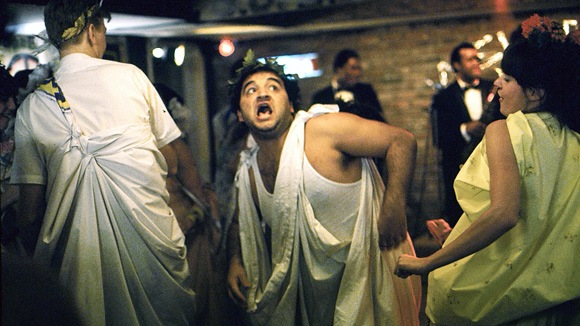
The Princeton Review has
released its "The Best 371 Colleges" annual guide, a poll of 122,000
students nationwide on topics, including the Best Party Schools.
Penn State takes the top spot in the Review's top party school
category and for beer consumption.
1. Penn State
University, State College, Pa.
2.
University of Florida, Gainesville, Fla.
3.
University of Mississippi, Oxford, Miss.
4.
University of Georgia, Athens, Ga.
5. Ohio
University, Athens, Ohio
6. West Virginia University,
Morgantown, W.Va.
7.
University of Texas, Austin, Texas
8.
University of Wisconsin, Madison, Wis.
9. Florida
State University, Tallahassee, Fla.
10.
University of California-Santa Barbara, Santa Barbara, Calif.
11.
University of Colorado, Boulder, Colo.
12.
University of Iowa, Iowa City, Iowa
13. Union
College, Schenectady, N.Y.
14. Indiana
University, Bloomington, Ind.
15. DePauw
University, Greencastle, Ind.
16.
University of Tennessee, Knoxville, Tenn.
17. Sewanee:
The University of the South, Sewanee, Tenn.
18.
University of North Dakota, Grand Forks, N.D.
19. Tulane
University, New Orleans, La.
20. Arizona
State University, Tempe, Ariz.
OOH,
LET'S RUSH RIGHT OVER AND MEET
SOME NERDS FOR A LEMONADE!
"`Ooh, check that out,' said my dinner companion, pointing
to the ground beneath a neighboring table. `It's a $10 bill - should I
grab it?' Her eyes darted around, then she reached down - and
came up empty-handed.
"`Very funny,' she said. `It's
glued to the ground.'
"Watching from behind our table,
the host chuckled. `Gotcha,' he said. The bill was a permanent
practical joke in the décor. It's just the sort of casual,
humorous
exchange we'd come to expect at Woodhouse Fish Co. A fun vibe is
evident in aspects like a giant decorative squid that coils over the
entrance and around the street lamp outside, and customer participation
- you'll find patrons concocting `do-it-yourself' lemonade ($3.50) at
the tables."--Amanda Gold, "Woodhouse Fish Co. has fun vibe, good
seafood," SFGATES (July 16,
2009).
* On Aug. 16 in NYC,
Karen and David Waltuck celebrate blues, local
brews, and smoked foods at Chanterelle
and The Jazz Gallery with performances by Marvin Sewell and Saunders
Sermon. Paired with each song will be craft beers from Fire Island
Brewery and Lake Placid “Ubu” Ale and dark and creamy Keegan “Mother’s
Milk.” $65 pp. Call 212-966-6960; www.chanterellenyc.com.
*On Aug. 17, San Francisco Street Food Festival’s Silent Online
Auction will go live at 10:00 a.m. and remain open until Aug. 27 at
8:00 p.m. One-of-a-kind food and beverage experiences will be available
for bidding, incl. private tours, tastings and dinners with renowned
San Francisco chefs, sommeliers and more. All proceeds go to La
Cocina. To see the full list of auction items, place bids and
learn more information about the festival, visit
www.sfstreetfoodfest.com.
* On Aug. 19 in New Orleans, Marigny Brasserie and Kendall
Jackson Family of Fine Wines are joining forces to co-host a wine
and food pairing dinner to benefit Southern Animal Foundation. $70 pp.
Call 504-945-4472.
* From Aug. 19-30 in NYC, Barbounia holds its
Third Annual Tomato Festival, a 3-course menu of tomato-inspired
appetizers, entrees and desserts for $35 and tomato-inspired
cocktails for $14. Call 212-995-0242; www.barbounia.com.
* On. Aug. 20 in Miami, Canyon Ranch Grill invites guests to
“Name that Grape” during an evening showcase of fine sustainable,
organic and biodynamic wines, guided by wine professionals through a
tasting and Q & A session as they sample delicious hors d’oeuvres
by Executive Chef Elizabeth Barlow. $20 pp. Call
305-514-7165.
* On Aug.
21, in Chappaqua, NY,
unlimited food, wine and beer will be served at the Crabtree’s Kittle House "Pig Roast
& Clam Bake." $85 pp. Call 914-666-8044.
* On Aug. 21 in Arlington Hills, ILL, Le Titi De Paris Sommelier James Crooker will feature Iron Horse Winery in the continuing 2009 American Winery Dinner Series. On Aug. 28, Sommelier Marcel Flori will feature Burgundy in the 2009 Tour de France Gastronomique Regional Dinner Series. Cusine by Chef Michael Maddox. Each dinner $85 pep. Call 847-506-0222.
* On Aug. 21 in Charlotte, NC, Harper's Restaurant at Carolina Place Mall is holding a unique beer dinner and for the rare opportunity to help select a brand new beer to be produced and marketed by Samuel Adams Brewery. Harper's Chef Dar Amidi will offer a special 5-course dinner paired with a selection of award-winning lagers and beers by Samuel Adams. $30 pp. Call 704-541-5255; visit www.harpersrestaurants.com.
* On Aug. 21 in Houston, Catalan Food and Wine will host
with Mollydooker Wines “BLEND A HAND” Winemaker’s Event and Lunch
Sarah and Spark Marquis, owners and winemakers of Mollydooker Wines,
will host an interactive session on how they blend their
wines. $40 pp. Call 713-426-4260; www.catalanfoodandwine.com.
* On Aug. 21 in Dallas, The Grill on the Alley is partnering
with Galleria Dallas and Collin County Children's Advocacy Center twith
The First Annual Mother-Daughter Back-to-School Breakfast and Fashion
Show, by Executive Chef Daniel Winans and the culinary team at The
Grill on the Alley. The fashion show will feature fashions from
Macy's at Galleria Dallas beginning at 10:30 a.m., with special seating
for breakfast guests. Tix are $20 a pair and guests receive
special gifts from Galleria Dallas merchants. Call 972-633-6628.
*
On Aug. 23 in Shelburne, VT,
some of the nation’s most authoritative authors on artisan cheese will
gather for the first annual Vermont
Cheesemakers Festival, hosted by the Vermont Institute for
Artisan Cheese, the Vermont Butter & Cheese Company, and the
Vermont Cheese Council, featuring over 100 types of cheese from 40
different cheesemakers, a variety of locally produced wines and beers,
and several other artisan foods, including maple syrup, honey,
chocolates, baked goods, and more. Tix available at
www.vtcheesefest.com for $20 pp, open to the first 1,000 people
who register.
* Mandarin Oriental Hyde Park in London is celebrating all that is British this year with a ‘Best of British’ program, incl. 1 night’s accommodation, Full English Breakfast, A Harrods Gift Certificate, lunch in the Foliage Restaurant, Complimentary membership to Aspinalls gaming club. Visit www.mandarinoriental.com/london or call +44 (0) 207 235 2000. Available thru Jan. 31, 2010.
*
On Aug. 24 Trina restaurant at
The Atlantic Hotel in Ft
Lauderdale will be hosting their first wine dinner in
cooperation with Antinori. The $55 four-course menu is paired with
vintages from some of the venerable Italian winemaker’s best estates in
Tuscany and Umbria. Upcoming wine dinners Sept. 24 will feature J. Lohr
and Oct. 29 features Ste Michelle. Call 954-567-8076; visit
www.atlantichotelfl.com for room rates and special offers.
* On Aug. 25, in Miami, Eos continues its monthly wine
dinner series
with wines from the Tuscan Hills region and a dinner Call
305.503.4400.
*
On Aug. 25 & 26 in San
Francisco, Nob Hill Grille
hosts "A Tribute to Pork," a 4-course meal, plus an amuse bouche
and two palate cleansers, for $40, with wine pairings for an additional
$15. Call 415-474-5985; visit www.NobHillGrille.com.
*
From Aug. 28-30 the 6th annual Epicurean
Classic takes place on the bluff overlooking Lake Michigan in St. Joseph, MI, with over 45
cooking demos, 16 cheese/wine/beer tasting seminars, 6 Guest Chef
Dinners, the opening Great Lakes Great Wines BBQ Reception, the Grand
Reception and the daily Tasting Pavilion. Some of this year’s featured
artisans incl. Curtis Stone, Jean Joho, Gale Gand, Takashi Yagihashi,
Tom Valenti, Anna Thomas, Jennifer McLagan, Giuliano Hazan, Brian
Polcyn, Eve Aronoff and Mary Sue Milliken. Visit
www.epicureanclassic.com or call 231-932-.0475.
*
On Aug. 30th in NYC,
wear white and receive a complimentary glass of Georges Duboeuf Macon
Villages or Pouilly-Fuissé at the Hudson Hotel from 4pm to 6pm.
*
On Aug. 31 in Richmond, VA,
Lemaire will feature t
the Rappahannock River Oyster Company and innovative beverage pairings.
Brothers Travis and Ryan Croxton will be on hand, as well as Wine
Director Ben Eubanks to pair beverages that include Prosecco, Tomio
Junmai Ginyjo Sake, Gruner Veltliner and Albarino. $35 pp.Call
804-649-4629.
* On Aug. 31 in NYC, sommelier Eric Ziller at Alto
invites guests to bring in their favorite pre-1990 northen Italian red
to enjoy and share with other guests. A 5-course meal appropriate
to
these wines will be served. Ziller will also open a great Barolo
from
Alto's cellar. $150 pp. Call 212-308-1099.
* Food and Wine Trails has 14 different wine cruises in 2010 to the Mediterranean and Australia and New Zealand, on S.S. Oceania, Celebrity and Regent, each sponsored by a winery or a group of wineries which brings 300 to 400 bottles of wine for their guests to enjoy. Cruises begin at $1,649 pp. The 2010 Food & Wine Trails wine-cruise collection includes such notable brands as ZAP, Matanzas Creek, Robert Mondavi, Franciscan, Food & Wine Magazine who is partnered with Wines From Spain and the Bordeaux châteaux's of Andre Lurton, Firestone, Sebastiani, Three Rivers, Lincourt Winery, Ch. St. Michelle, and Flowers. Visit www.foodandwinetrails.com; call 800-367-5348.
* Urbana Restaurant and Wine Bar in Washington, DC has launched a new raw bar menu, where Chef Alex Bollinger will offer a daily selection of oysters, shrimp and whole Maine lobster. During happy hour, 5-7 p.m. daily, oysters are $1 each, 6 shrimp for $12, and whole Maine lobster on the shell is $18. After happy hour, oysters are $2 each or $16 per dozen. For the week of August 17th, select sparkling wines will be available for $5 at the raw bar. Call 202-956-6650 for more info or visit www.urbanadc.com.
* In NYC, Australian eatery Bondi Road is now offering a daily “Endless Brunch” special featuring all-you-can-drink Fosters and brunch cocktails, and a brunch entrée for $18 pp. Call 212-253-5311.
Everett Potter's Travel Report:
I consider this the best and savviest blog of its kind on the web. Potter is a columnist for USA Weekend, Diversion, Laptop and Luxury Spa Finder, a contributing editor for Ski and a frequent contributor to National Geographic Traveler, ForbesTraveler.com and Elle Decor. "I’ve designed this site is for people who take their travel seriously," says Potter. "For travelers who want to learn about special places but don’t necessarily want to pay through the nose for the privilege of staying there. Because at the end of the day, it’s not so much about five-star places as five-star experiences." To go to his blog click on the logo below: THIS WEEK: 30 YEARS OF NATURE TOURS; Italian for Beginners: "La Bella Lingua" is Dianna Hales love letter to the Italian language; SMART DEALS: India Taj Hotels set the gold standard of luxury in India. Now they have an offer that just might make you consider a quick trip to the subcontinent.

~~~~~~~~~~~~~~~~~~~~~~~~~~~~~~~~~~~~~~~~~~~~~~~~~~~~~~~~~~~~~~~~~~~~~~~~~~
Eating Las Vegas is the new on-line site for Virtual Gourmet contributor John A. Curtas., who since 1995 has been commenting on the Las Vegas food scene and reviewing restaurants for Nevada Public Radio. He is also the restaurant critic for KLAS TV, Channel 8 in Las Vegas, and his past reviews can be accessed at KNPR.org. Click on the logo below to go directly to his site.
~~~~~~~~~~~~~~~~~~~~~~~~~~~~~~~~~~~~~~~~~~~~~~~~~~~~~~~~~~~~~~~~~~~~~~~~~~~
Tennis Resorts Online: A Critical Guide to the World's Best Tennis Resorts and Tennis Camps, published by ROGER COX, who has spent more than two decades writing about tennis travel, including a 17-year stretch for Tennis magazine. He has also written for Arthur Frommer's Budget Travel, New York Magazine, Travel & Leisure, Esquire, Money, USTA Magazine, Men's Journal, and The Robb Report. He has authored two books-The World's Best Tennis Vacations (Stephen Greene Press/Viking Penguin, 1990) and The Best Places to Stay in the Rockies (Houghton Mifflin, 1992 & 1994), and the Melbourne (Australia) chapter to the Wall Street Journal Business Guide to Cities of the Pacific Rim (Fodor's Travel Guides, 1991). THIS WEEK:

Family Travel
Forum: The
Family Travel Forum (FTF), whose motto is "Have Kids, Still Travel!",
is dedicated to the ideals, promotion and support of travel with
children. Founded by business professionals John Manton and Kyle
McCarthy with first class travel industry credentials and global family
travel experience, the independent, family-supported FTF will provide
its members with honest, unbiased information, informed advice and
practical tips; all designed to make traveling a rewarding, healthy,
safe, better value and hassle-free experience for adults and children
who journey together. Membership in FTF will lead you to new worlds of
adventure, fun and learning. Join the movement.
All You Need to Know Before You Go
~~~~~~~~~~~~~~~~~~~~~~~~~~~~~~~~~~~~~~~~~~~~~~~~~~~~~~~~~~~~~~~~~~~~~~~~~
MARIANI'S VIRTUAL GOURMET NEWSLETTER is published weekly. Editor/Publisher: John Mariani.
Contributing Writers: Robert Mariani,
John A. Curtas, Edward Brivio, Mort
Hochstein, Suzanne Wright, and Brian Freedman. Contributing
Photographers: Galina Stepanoff-Dargery, Bobby Pirillo. Technical
Advisor: Gerry McLoughlin.
Any of John Mariani's books below
may be ordered from amazon.com by clicking on the cover image.
 My
newest book, written with my brother Robert Mariani, is a memoir of our
years growing up in the My
newest book, written with my brother Robert Mariani, is a memoir of our
years growing up in the For those of you who don't think of the Robert and I think you'll enjoy this very personal look at our --John Mariani |
 |
 |
 |
 |
 |
 |
© copyright John Mariani 2009
